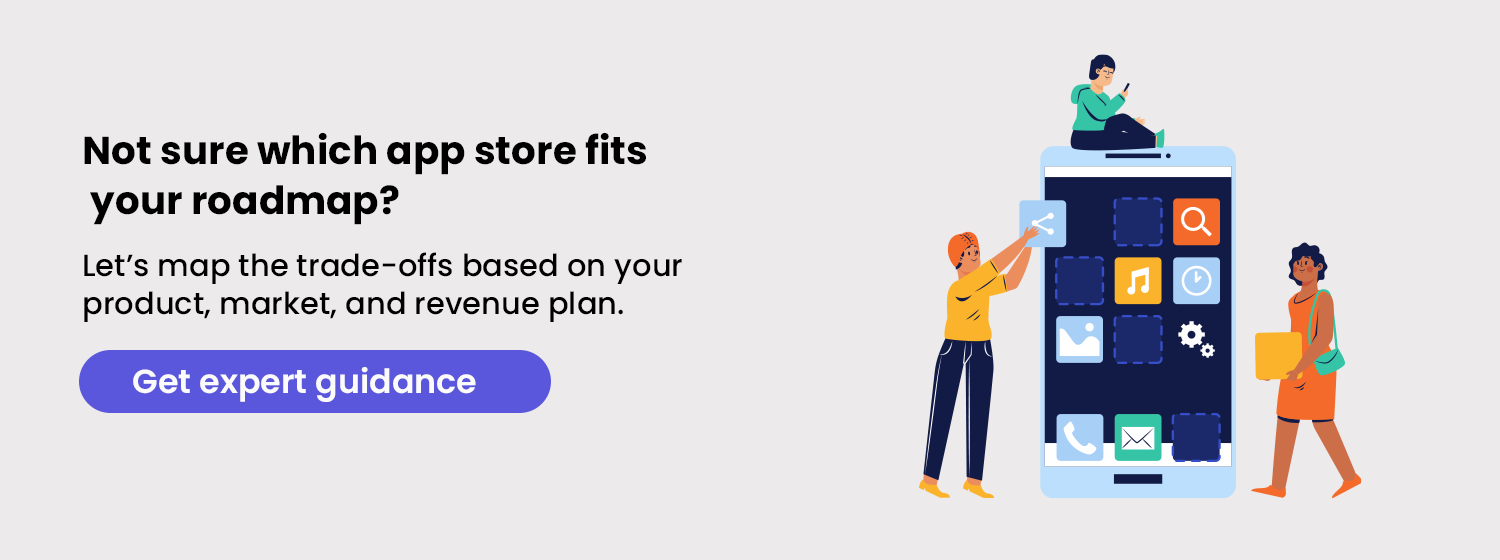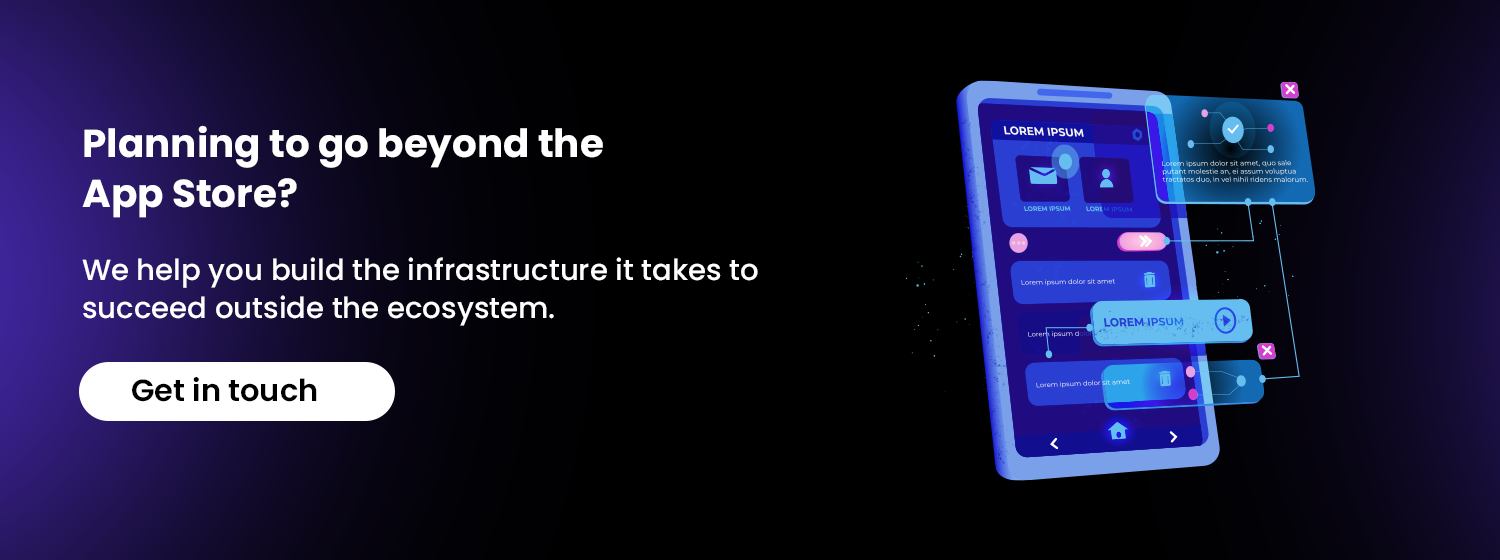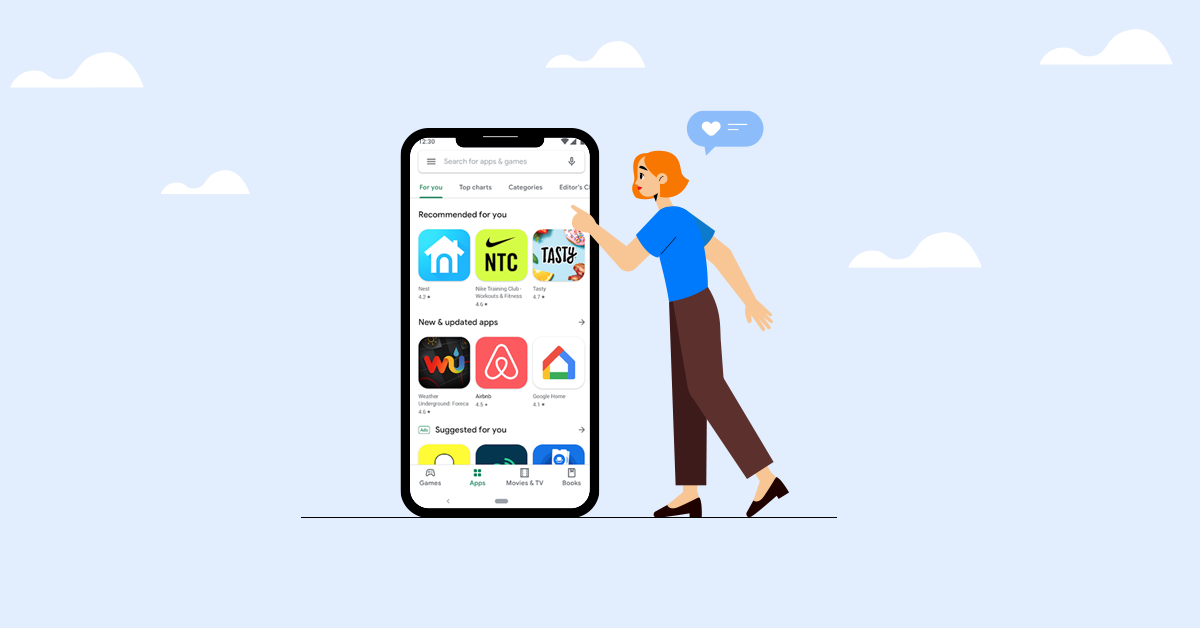
For years, launching an app meant submitting to the gatekeepers – Google Play and Apple’s App Store. These platforms offered scale, structure, and trust. But they also came with steep commission fees, tight submission policies, limited user data access, and little room for brand differentiation.
Now, a growing wave of entrepreneurs is challenging the status quo, eyeing Google or iOS alternative app stores not just as a workaround – but as a strategic move. Whether you’re tired of 30% cuts or want more control over your user relationships, exploring these open-source app stores could unlock new revenue models, faster market entry, and more flexible distribution.
In this article, we break down the why, how, and what of moving beyond the mainstream – and what you need to know before making the leap.
Why Entrepreneurs Are Looking Beyond the Big Two
Apple and Google dominate app distribution – but their dominance comes at a cost. For startups and independent developers, the rules are increasingly rigid, the competition overwhelming, and the profits thinner than expected.
Here’s why many entrepreneurs are exploring open-source app stores alternatives:
- High Commission Fees: The 15–30% cut taken by Apple and Google can significantly erode margins, especially for subscription-based or in-app purchase-heavy models.
- Limited User Data Access: Both platforms restrict access to user-level data, making it harder to build meaningful retention strategies or personalized experiences.
- Approval Bottlenecks: App updates and launches can be delayed by opaque and sometimes inconsistent review processes.
- Restricted Monetization Models: You’re often forced into using their billing systems, which limits pricing experiments, bundled offerings, or third-party payment integrations.
- Brand Visibility Challenges: Standing out among millions of apps is tough. iOS alternative app stores often provide more visibility, editorial features, or niche targeting.
For many entrepreneurs, the move isn’t about abandoning Google or Apple altogether – it’s about diversifying distribution, regaining control, and optimizing for profitability.
Top Alternative App Stores – Based on What You’re Really Trying to Achieve
Leaving the Play Store or App Store isn’t just a rebellious move – it’s often a strategic one. Whether you’re tired of 30% commissions, frustrated by slow approvals, or simply want more control over how users find and interact with your app, there’s a growing world of best alternative app stores worth exploring.
But instead of tossing out a flat list of “other” stores, let’s look at which platforms make sense depending on your goals – and what the trade-offs (and actual costs) look like.
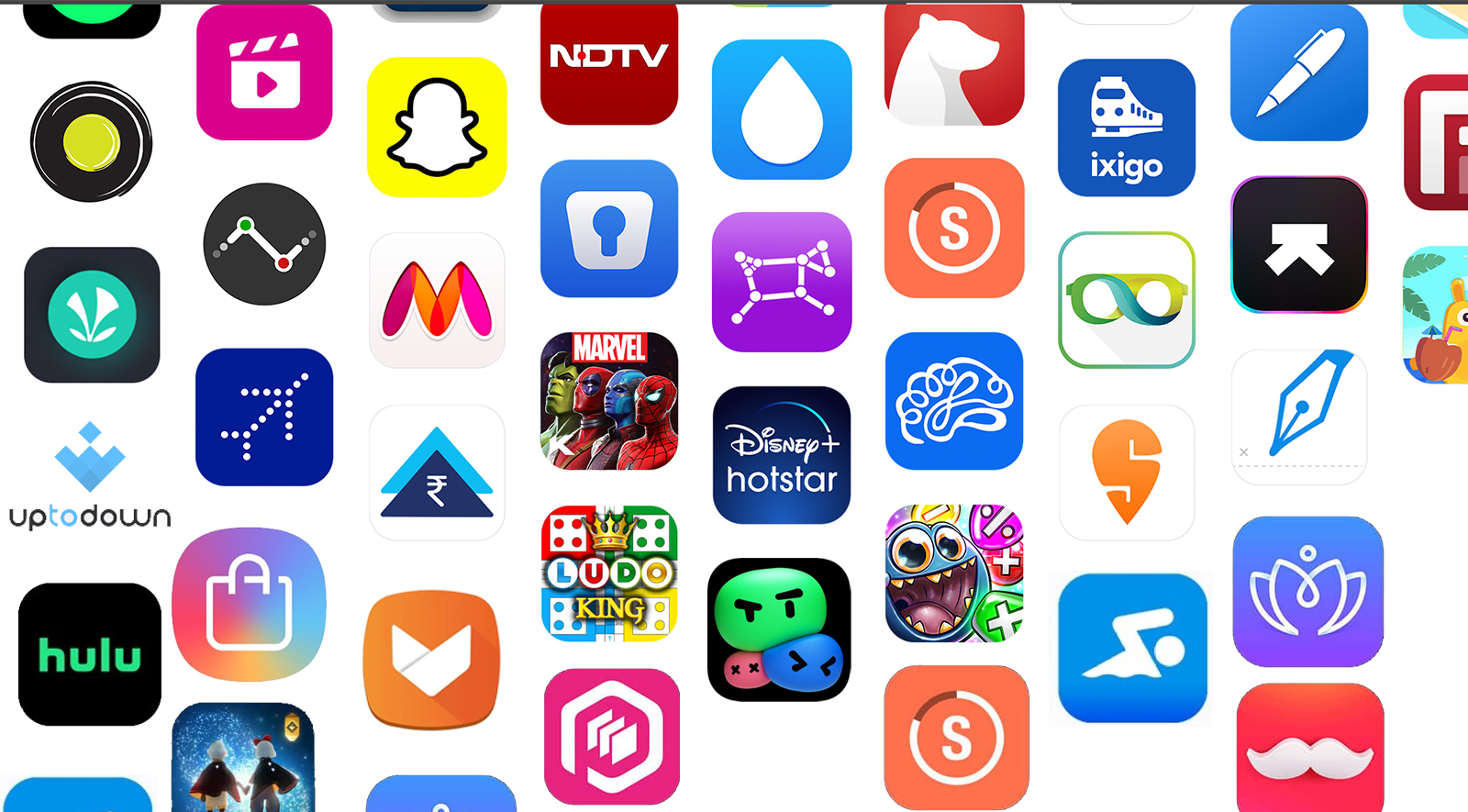
1. Aptoide – For founders who want revenue control without going fully rogue
If you’re frustrated by high commission fees but still want the infrastructure of a store, Aptoide strikes a balance. It’s independent, open-source, and lets you integrate your own billing system. Unlike Google Play, which takes up to 30%, Aptoide typically charges between 19–25%, depending on the services you opt into. It also has a decent user base – over 400 million users globally – which means you don’t have to start from scratch in terms of visibility.
What makes Aptoide even more appealing is its push into alternative monetization models, including token-based economies and developer-friendly ad networks. You’re not boxed into a particular ecosystem, which is a win if you’re building something innovative in the monetization space.
It’s a solid pick for startups with aggressive revenue targets or those testing new payment flows – especially if you’re running freemium or subscription apps where margin control is everything.
2. Uptodown – For teams targeting emerging markets or Android-heavy regions
Uptodown doesn’t make much noise in the U.S., but it’s quietly dominating app distribution across Latin America, parts of Europe, and Southeast Asia. It’s entirely focused on Android, supports APK downloads without needing a Google account, and is a go-to for users in regions where the Play Store is either restricted or irrelevant.
What makes it attractive to founders is the cost: Uptodown is completely free to publish on. They make money via optional advertising and premium placement, not by taxing your app’s revenue. If your strategy involves lightweight apps, content-driven tools, or freemium models targeted at cost-sensitive users, this is a goldmine. You’re not just avoiding high commissions – you’re gaining organic reach in high-growth markets where competition is less brutal and discovery is still possible.
3. TapTap – For gaming startups that want community-first visibility
Gaming on mobile is its own beast, and TapTap is one of the few stores built with that in mind. Originating in China, but increasingly relevant across Asia and globally, TapTap is part app store, part social platform. Games are reviewed by users, discussed in forums, and recommended based on actual play – not just installs and ratings.
Publishing is free, and while TapTap does offer paid promotion, most indie and mid-tier studios break through on community traction alone. There’s also no forced revenue share model – you control how you monetize. If you’re building a game that benefits from organic hype, multiplayer modes, or community engagement, TapTap gives you a channel far better suited than the generalist stores.
It’s also a smart play if you’re entering markets where gaming is culturally massive but the App Store or Play Store have content restrictions (China being a prime example).
4. Galaxy Store – For premium Android visibility without the Play Store grind
Samsung ships millions of devices annually, and every one of them comes with the Galaxy Store pre-installed. While it’s often overlooked, it offers a major opportunity – especially for developers targeting higher-end Android users.
What sets Galaxy Store apart isn’t just access – it’s leverage. Samsung actively curates apps and features them based on device type, usage behavior, and regional relevance. The store favors quality over quantity, which gives well-built apps a better shot at visibility. Publishing is free, but you’ll need to pass Samsung’s approval process, which is a bit more hands-on than Google Play but still faster than Apple’s.
For founders, this is a chance to stand out in a store that isn’t completely saturated, especially if your app taps into Samsung-specific features like foldables, S Pen, or wearable integration.
5. Side-loading & Direct APKs – For total freedom (and full responsibility)
Then there’s the fully direct route. Hosting your APK on your own website or distributing it through platforms like Telegram, Discord, or Reddit communities gives you 100% control. No gatekeepers, no commissions, and no restrictions on payments or content.
But it comes with overhead. You need to earn user trust, ensure airtight security, and possibly build your own onboarding and update systems. Side-loading also tends to limit reach – especially in iOS, where it’s barely an option outside of enterprise distribution.
Still, for early MVPs, closed beta programs, or apps that can’t get past App Store policies (think crypto wallets, adult content, or controversial social platforms), this is often the only viable way to go live. Cost-wise, you’ll just pay for hosting, CDN, analytics, and any third-party tools you integrate – but you’ll own every part of the user journey.
6. Private App Stores via MDM – For enterprise apps that don’t belong on public shelves
Not every app is built for the general public. If you’re building for field technicians, healthcare teams, retail associates, or any internal workforce use case, public stores create more problems than they solve. That’s where private app stores – often powered by MDM (Mobile Device Management) tools – come in.
You distribute only to approved users, control updates remotely, and bypass the legal red tape of public compliance. There are no commissions here, but you’ll need to budget for your MDM provider (which usually charges per device or seat). It’s more upfront planning, but for B2B or in-house SaaS tools, the control and security are well worth it.
The Risks, Trade-offs, and Realities No One Tells You
The best alternative app stores feel like a freedom play – and in many ways, they are. But with that freedom comes a messier layer of logistics that’s easy to underestimate. The moment you step outside the Apple-Google ecosystem, you start playing by different rules. Some of them favor you. Some of them make things a whole lot more complicated.
Discovery is no longer automatic.
The App Store and Google Play might take a hefty cut, but they also offer baked-in discoverability through rankings, featured placements, and search optimization. With iOS app store alternatives, you often have to drive your own traffic – or work extra hard to get featured by their editorial teams (if they have one). Even when you do, these stores rarely match the scale or conversion power of the big two.
Trust becomes something you have to earn – not something users assume.
Users trust Apple and Google implicitly when downloading apps. When they see a download prompt from a third-party store or an APK on your site, there’s hesitation. Is it safe? Will it mess up my phone? That means your onboarding copy, landing pages, and update flows need to work harder to build confidence. Especially for side-loading, you’ll need to guide users through permission settings and device warnings – not exactly frictionless.
Update management gets technical. Fast.
Play Store and App Store updates are seamless. Users get notified, apps update in the background, life moves on. With many alternatives – or direct installs – you’re now responsible for alerting users about updates, re-engaging them to install, and ensuring you don’t fragment your user base. Push notification systems, in-app alerts, and forced-update flows are things you’ll likely need to implement yourself.
Policy freedom can be a double-edged sword.
Yes, you can bypass Apple’s anti-crypto policies or Google’s restrictions on certain content types. But just because you can ship something doesn’t mean users or regulators won’t push back. iOS app store alternatives don’t automatically make you immune to legal risk – they just make you harder to police. And if your app starts scaling, questions around compliance, encryption, billing, or age-gated content will still catch up.
You’re trading the ecosystem for ownership.
When you move away from the defaults, you lose the visibility that comes with them – but you gain deeper ownership. Your user base becomes yours. Your monetization stack becomes more flexible. Your release cycle becomes your own. For many entrepreneurs, that trade is worth it. But it only works if you’re ready to build the scaffolding that the big stores typically provide.
How to Choose the Right App Store?
With all the noise around commissions, policies, and “walled gardens,” it’s tempting to pick an app store based on frustration alone. But the smart move? Choose based on distribution logic. Think about where your users are, what they expect, and how much friction they’re willing to tolerate – then build backwards.
Here’s how to break it down:
Start with your app’s lifecycle stage.
- If you’re still testing product-market fit or running early MVPs, side-loading or direct APK distribution can save time and headaches. You don’t need mass reach – you need control, fast iteration, and no platform bottlenecks.
- Once you start scaling, visibility matters. At that point, hybrid strategies make more sense – stay on Google Play for broad reach, but launch on Aptoide or Galaxy Store to improve margins or tap niche audiences.
- For mature apps with a clear user base and monetization flow, alternative stores become a way to diversify risk and reduce dependency on Big Tech rules.
Know your users’ tech confidence.
There’s a world of difference between pushing a side-loaded APK to crypto-native Redditors vs. onboarding retail customers over 40. If your audience isn’t used to toggling “Install from unknown sources” or dealing with security prompts, you’ll need to stick to more polished Google Play alternatives – or keep at least one foot in the mainstream stores.
Match the store’s DNA with your app’s category.
- Gaming? Go where the gamers are – TapTap or Galaxy Store.
- Utility or productivity tools? Uptodown gives you lean Android access in non-U.S. regions.
- Internal workforce apps? Private MDM-based stores are your best friend.
- Anything pushing boundaries in content or payment? Look to Aptoide or direct installs where policy is less of a chokehold.
Don’t go all in unless you’ve tested the ground.
It’s not an all-or-nothing game. Plenty of teams launch on Google Play and distribute via Aptoide. Or they test APK delivery on a landing page before spending time integrating with Uptodown. Treat alt stores like marketing or infra channels – run tests, measure CAC vs. LTV, monitor drop-offs in install flows. Make data-driven decisions, not emotional ones.
Be ready to support the users.
Alternative distribution isn’t “set and forget.” You’ll need good documentation, a responsive support flow, and ideally a lightweight CRM or notification system. If users run into issues, there’s no AppleCare or Play Store FAQ to lean on. You’re the help desk now – and that’s part of the trade for having more control.
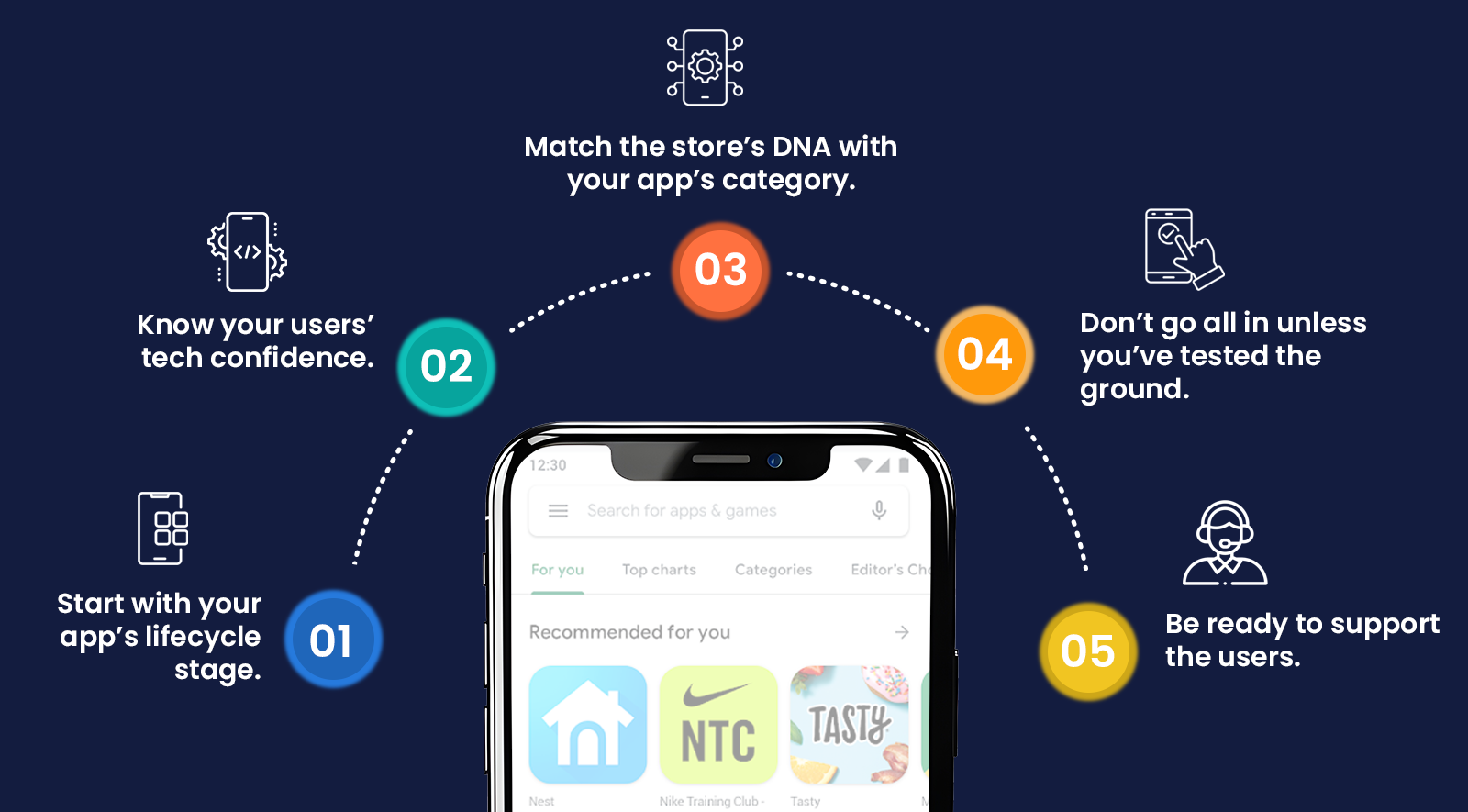
CodingworkX’s Perspective
As a software development company, we work closely with entrepreneurs and businesses to build, launch, and maintain their apps. Over the years, we’ve seen firsthand how relying solely on Apple’s App Store and Google Play can limit flexibility and slow down growth – especially when clients want to experiment with innovative business models or reach niche audiences.
While the Play Store and App Store provide unbeatable scale and trust, they also come with constraints that don’t always fit every project. We’ve guided clients through the challenges of lengthy review times, strict policy requirements, and costly revenue shares that cut deeply into their margins.
That’s why we advocate for exploring alternative app distribution options as part of a smart, diversified launch strategy. Whether it’s deploying apps through third-party app stores like Aptoide or Galaxy Store, or offering side-loaded APKs for specific user groups, these channels can open new doors – lowering costs, speeding up release cycles, and enabling more direct customer relationships.
Of course, Google Play alternatives require more hands-on management. We help our clients set up streamlined update systems, create clear onboarding flows, and ensure security best practices, so users feel confident installing apps outside the mainstream stores.
Ultimately, third-party app stores aren’t about replacing Google or Apple – they’re about giving clients more control and more options. In today’s fast-moving market, that flexibility can be the difference between a stalled launch and a thriving product.
FAQs
Q. What are alternative app stores?
Ans. Alternative app stores are platforms outside of Apple’s App Store and Google Play where developers can publish and distribute mobile applications. They range from region-specific marketplaces to niche-focused stores catering to gaming, enterprise, or open-source communities.
Q. Why should developers consider third-party app stores?
Ans. Third-party app stores offer more flexibility in monetization, lower commission fees, faster approvals, and access to niche or underserved markets. For startups, they’re often a strategic move to regain control over distribution, pricing, and user engagement.
Q. Are alternative app stores safe for app distribution?
Ans. Many alternative stores are secure and developer-friendly, with robust review processes and anti-fraud measures. However, due diligence is key. Developers should assess the store’s reputation, security protocols, and user base before committing.
Q. What are the best alternative app stores for Android?
Ans. Top Android alternatives include Aptoide, Uptodown, TapTap, Amazon Appstore, F-Droid, and the Samsung Galaxy Store. Each serves a different purpose – from monetization flexibility to regional reach or gaming visibility.
Q. How can alternative app stores increase app downloads?
Ans. Some platforms offer lower competition, better editorial support, and stronger regional reach – especially in emerging markets. Developers who tailor their launch and ASO strategies to these ecosystems often see higher organic traction compared to saturated mainstream stores.
Q. Are there alternative app stores for iOS apps?
Ans. Options are more limited due to Apple’s closed ecosystem. However, in enterprise settings, developers can distribute via MDM tools or Apple’s Enterprise Program. With evolving EU regulations (like the DMA), more public iOS alternatives may emerge in select regions.
Q. How do app developers benefit from alternative app distribution?
Ans. Benefits include reduced fees, control over payment systems, faster release cycles, direct access to user data, and the ability to experiment with pricing, features, and updates – all of which can improve retention and profitability.
Q. Can alternative app stores help with app monetization?
Ans. Yes. Many stores allow custom billing integrations, ad networks, and crypto or token-based monetization models. This flexibility is especially valuable for freemium, subscription, or utility apps where margin control is critical.


